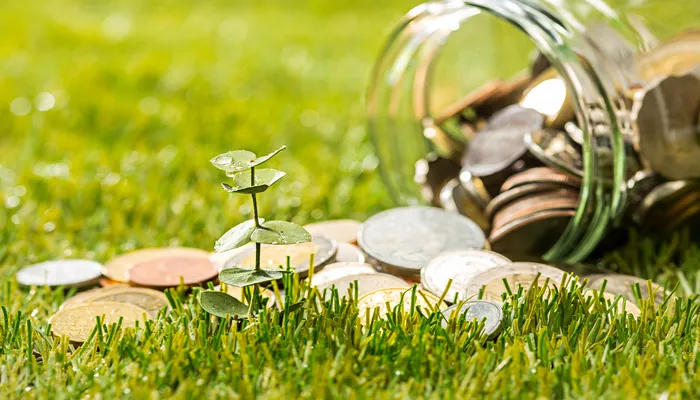In recent years, the global push towards sustainability has gained significant momentum. This shift has led to an increased interest in renewable energy sources, which are seen as key to reducing carbon emissions and combating climate change. As more individuals and businesses seek to transition to cleaner energy, financial instruments like renewable energy loans have become essential. These loans provide the necessary capital to fund energy-efficient upgrades and renewable energy projects, making it easier for people to contribute to a more sustainable future.
The concept of renewable energy loans is not new, but it has gained substantial traction in the last decade. These loans are specifically designed to support the adoption of renewable energy technologies, such as solar panels, wind turbines, and geothermal systems. By making these technologies more affordable, renewable energy loans play a crucial role in the global effort to reduce dependence on fossil fuels and lower greenhouse gas emissions.
The Growing Demand for Renewable Energy
The demand for renewable energy has been driven by a combination of environmental concerns, economic incentives, and technological advancements. Governments worldwide are implementing policies and incentives to promote the adoption of renewable energy, such as tax credits, subsidies, and grants. Additionally, the decreasing cost of renewable technologies, like solar panels and wind turbines, has made them more accessible to a broader audience. This growing demand has created a robust market for renewable energy loans, as individuals and businesses seek to finance their green initiatives.
In addition to government policies, the private sector has also played a significant role in fostering the growth of renewable energy. Corporations are increasingly committing to sustainability goals, and many are investing in renewable energy to reduce their carbon footprints. This corporate push towards sustainability further boosts the demand for renewable energy loans, as companies seek financing options to support their green projects. Furthermore, public awareness about climate change and the importance of renewable energy has grown, leading to increased consumer demand for clean energy solutions.
Types of Renewable Energy Loans
There are several types of renewable energy loans available to consumers and businesses, each tailored to different needs and financial situations. Personal loans for renewable energy projects are often used by homeowners to install solar panels, upgrade to energy-efficient appliances, or improve home insulation. On a larger scale, commercial renewable energy loans support businesses in their efforts to implement green technologies, such as solar farms or wind energy installations. Additionally, government-backed loans and grants are available to further reduce the financial burden of transitioning to renewable energy.
Another important type of renewable energy loan is the green mortgage, which allows homeowners to finance the purchase of energy-efficient homes or make eco-friendly upgrades to existing properties. Green mortgages often come with lower interest rates and longer repayment terms, making them an attractive option for those looking to invest in sustainable living. Additionally, there are specialized loans for community renewable energy projects, such as shared solar or wind installations, which enable groups of individuals or organizations to collectively invest in renewable energy and share the benefits.
Benefits of Renewable Energy Loans
Renewable energy loans offer numerous benefits to both borrowers and the environment. For borrowers, these loans provide the upfront capital needed to invest in energy-efficient upgrades, which can lead to significant long-term savings on energy bills. Additionally, many renewable energy projects increase property value and offer protection against future energy price volatility. From an environmental perspective, renewable energy loans help reduce greenhouse gas emissions, decrease reliance on fossil fuels, and promote the use of sustainable resources.
Moreover, renewable energy loans can stimulate economic growth by creating jobs in the green energy sector. The installation and maintenance of renewable energy systems require skilled labor, leading to increased employment opportunities. This job creation not only benefits the economy but also supports the development of a skilled workforce in the renewable energy industry. Additionally, renewable energy loans can help reduce energy poverty by providing access to affordable and sustainable energy solutions, particularly in remote or underserved communities.
Challenges and Risks
Despite the many benefits, there are also challenges and risks associated with renewable energy loans. One of the primary challenges is the initial cost of renewable energy projects, which can be substantial. Although loans help mitigate this issue, borrowers must still consider their ability to repay the loan over time. Furthermore, renewable energy projects can be subject to regulatory changes, market fluctuations, and technological advancements, which can impact their long-term viability and profitability. Lenders must carefully assess these risks when offering renewable energy loans.
Another challenge is the lack of awareness and understanding of renewable energy loans among potential borrowers. Many individuals and businesses are unaware of the financing options available to them, which can hinder the adoption of renewable energy technologies. To address this issue, lenders and government agencies must invest in educational campaigns to inform the public about the benefits and availability of renewable energy loans. Additionally, the process of obtaining these loans can be complex and time-consuming, which may deter some borrowers from pursuing them.
Case Studies: Successful Renewable Energy Loan Programs
Several successful renewable energy loan programs highlight the potential of these financial instruments to drive sustainable development. For example, the Property Assessed Clean Energy (PACE) program in the United States allows homeowners to finance energy-efficient upgrades through property tax assessments. Another example is the Green Deal in the United Kingdom, which provides loans for home improvements that increase energy efficiency. These programs have demonstrated that well-structured renewable energy loans can lead to widespread adoption of green technologies and significant environmental benefits.
In Germany, the KfW Development Bank offers a range of financing options for renewable energy projects, including low-interest loans and grants. These programs have been instrumental in making Germany a leader in renewable energy adoption. Similarly, the Solar Loan Program in Australia provides affordable financing for residential solar installations, helping to increase the country’s solar energy capacity. These case studies illustrate that with the right support and incentives, renewable energy loans can play a crucial role in promoting sustainable energy solutions globally.
The Role of Financial Institutions
Financial institutions play a crucial role in the success of renewable energy loan programs. Banks, credit unions, and other lenders must develop innovative loan products that cater to the unique needs of renewable energy projects. Additionally, they must educate borrowers on the benefits and risks associated with these loans and provide support throughout the application and repayment process. By doing so, financial institutions can help bridge the gap between the desire for sustainable energy and the financial means to achieve it.
Moreover, financial institutions can collaborate with government agencies and non-profit organizations to create comprehensive support systems for renewable energy projects. This collaboration can include providing technical assistance, offering financial incentives, and developing policies that encourage investment in renewable energy. By working together, these entities can create a more supportive environment for renewable energy adoption, making it easier for individuals and businesses to transition to clean energy solutions.
Future Prospects
The future of renewable energy loans looks promising as the world continues to prioritize sustainability. Advances in renewable energy technologies, coupled with increasing awareness of climate change, are likely to drive further demand for these loans. Additionally, governments and financial institutions are expected to continue developing and refining loan programs to make renewable energy more accessible to a wider audience. As a result, renewable energy loans will play an increasingly important role in the global transition to a more sustainable energy future.
Furthermore, the development of new financial instruments, such as green bonds and climate bonds, is expected to complement renewable energy loans and provide additional funding sources for sustainable energy projects. These financial innovations can help attract a broader range of investors and increase the availability of capital for renewable energy initiatives. As the financial sector continues to evolve, renewable energy loans and related instruments will become even more integral to the global efforts to combat climate change and promote sustainability.
Paving the Way to a Sustainable Future
Renewable energy loans are a vital tool in the fight against climate change. By providing the necessary financial resources to support energy-efficient upgrades and renewable energy projects, these loans enable individuals and businesses to contribute to a more sustainable future. Despite the challenges and risks involved, the benefits of renewable energy loans are clear, offering significant economic and environmental advantages. As the world continues to embrace sustainability, renewable energy loans will undoubtedly remain a key component of the global strategy to achieve a greener, more sustainable future.
The adoption of renewable energy loans represents a significant step towards a sustainable future. These loans not only facilitate the transition to clean energy but also contribute to economic growth and job creation. By overcoming the challenges and maximizing the benefits, renewable energy loans can drive the widespread adoption of renewable energy technologies, ultimately leading to a healthier and more sustainable planet for future generations.





